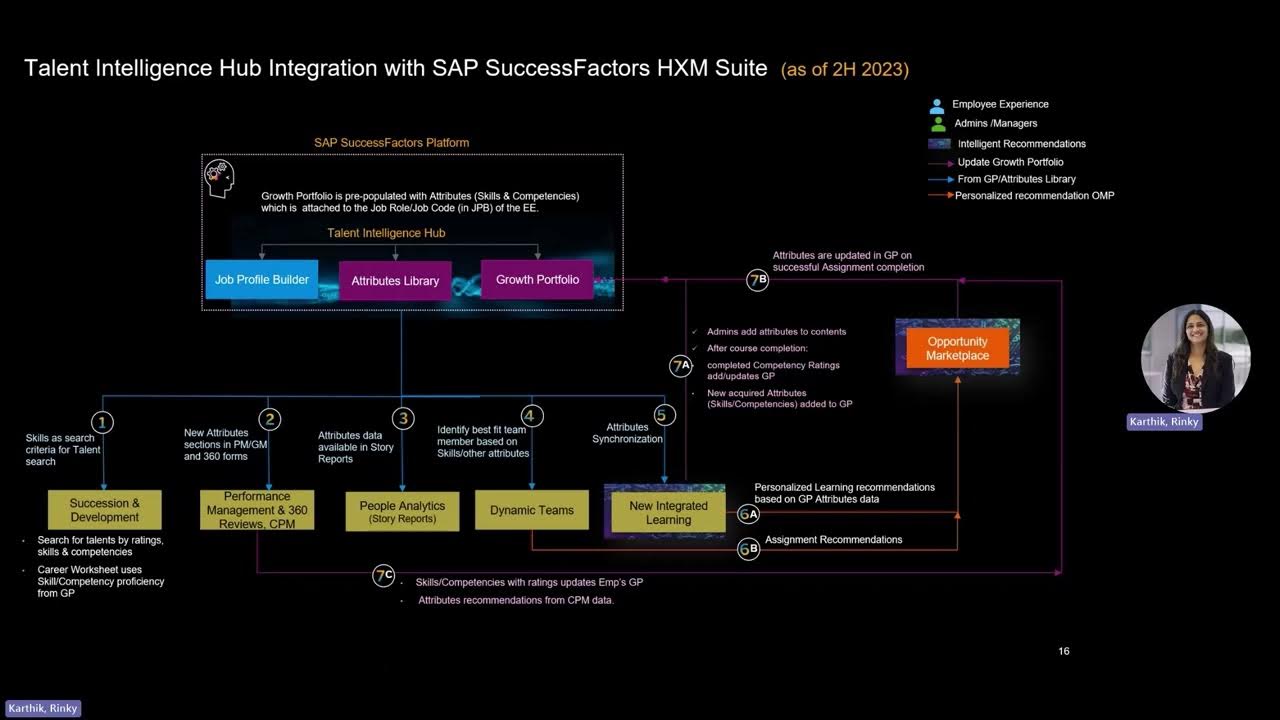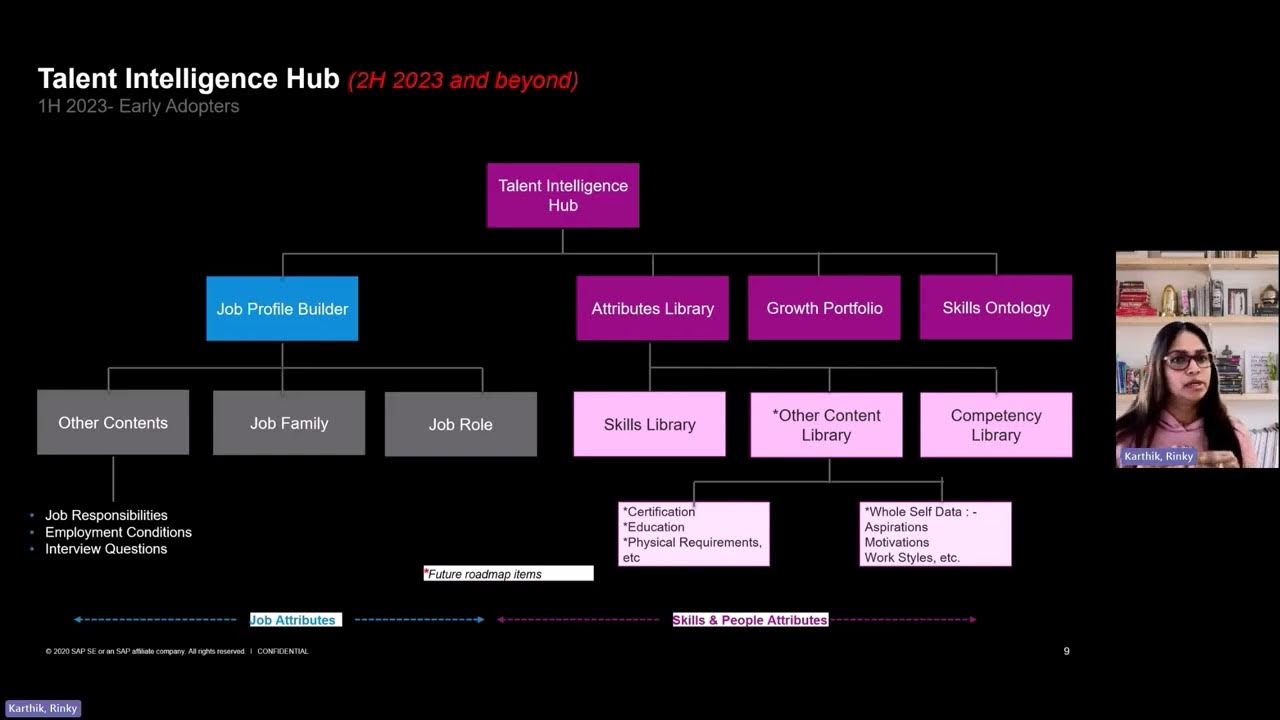SAP SuccessFactors Job Profile Builder
Summary
TLDRThis webinar, hosted by Talent Team, a premier value-added reseller of SAP SuccessFactors, focused on leveraging the Job Profile Builder for creating more effective job descriptions. The session covered the functionalities and key features of the tool, its integration with various SuccessFactors modules, and the process of migrating from the legacy Job Description Manager. The consultant provided a live demo, showcasing how to create job profiles and manage skills, emphasizing the importance of job descriptions in talent management. The webinar concluded with a Q&A segment and a call for feedback for future sessions.
Takeaways
- 😀 The webinar is hosted by Talent Team, a premier value-added reseller of SAP SuccessFactors, specializing in implementation services and product support for SuccessFactor solutions.
- 📝 The main focus of the webinar is to discuss the Job Profile Builder (JPB) tool within SuccessFactors, which is used to create more effective job descriptions.
- 🛠️ JPB is a successor to the legacy Job Description Manager (JDM) and is built on the metadata framework, offering more features and versatility for managing job profiles.
- 🔑 Key features of JPB include the ability to create various job profile content, template management, workflow integration, skill profile portlets, and employee acknowledgements.
- 🔗 JPB integrates directly with other SuccessFactor modules, allowing job profile information to flow between talent management processes without the need for redundancy.
- 📈 The tool supports standardization of job profiles across the organization, making it easier to manage roles and responsibilities from hire to retire.
- 🤝 Skill management is an integral part of JPB, allowing for the definition and assessment of skills related to job roles, enhancing the HR processes.
- 📚 The webinar covered the steps for migrating from JDM to JPB, emphasizing the importance of data validation to ensure a smooth transition.
- 💻 A demo was provided to illustrate the functionality of JPB, showing how to create and manage job profiles, templates, and associated content.
- 🗓️ The session was recorded and can be rewatched for further reference, and attendees were encouraged to share it with colleagues.
- ❓ The webinar concluded with a Q&A session, addressing questions about reporting on job profiles and configuring job profile acknowledgement settings.
Q & A
What is the main focus of the webinar presented in the script?
-The webinar focuses on how to produce more effective job descriptions using SuccessFactors' Job Profile Builder (JPB).
Who is the intended audience for the webinar?
-The intended audience includes HR professionals and other stakeholders involved in talent management and job description creation within organizations using SAP SuccessFactors.
What is the role of the Talent Team in the context of the webinar?
-The Talent Team is a premier value-added reseller of SAP SuccessFactors, specializing in implementation services and product support for SuccessFactors solutions.
How can participants engage with the presenters during the webinar?
-Participants can ask questions at any point by dropping them in the Q&A or chat box, and the presenters will address them either throughout the session or afterwards.
What is the significance of job descriptions in HR processes according to the script?
-Job descriptions are crucial as they set the foundation for recruiting, developing, retaining talent, and for optimum work performance by clarifying expected responsibilities and results.
What are some key features of the Job Profile Builder mentioned in the script?
-Key features include the ability to create various job profile content, job profile template management, optional workflows for approvals, skill profile portlets, and employee acknowledgement of job profile changes.
How does the Job Profile Builder integrate with other SuccessFactors modules?
-The Job Profile Builder integrates both directly and indirectly with other SuccessFactors modules, sharing information and ensuring consistency across talent management processes.
What is the purpose of the 'employee acknowledgement' feature in the Job Profile Builder?
-The 'employee acknowledgement' feature ensures that employees are notified of changes to their job profiles and have acknowledged that they have read and understood the changes.
Can organizations migrate from Job Description Manager (JDM) to Job Profile Builder, and what considerations are needed?
-Yes, organizations can migrate from JDM to JPB. Considerations include ensuring proper data migration, validating data consistency, and understanding that access to the competency library from the application will be lost.
How can the Job Profile Builder help with diversity and inclusion goals in job descriptions?
-The Job Profile Builder, along with the optional SAP SuccessFactors Job Analyzer feature, can help identify and highlight biased terms in job descriptions, promoting diversity and inclusion.
What are the next steps for participants after the webinar?
-Participants are encouraged to provide feedback and suggestions for future webinar topics, and to reach out with any questions to the provided email addresses.
Outlines

This section is available to paid users only. Please upgrade to access this part.
Upgrade NowMindmap

This section is available to paid users only. Please upgrade to access this part.
Upgrade NowKeywords

This section is available to paid users only. Please upgrade to access this part.
Upgrade NowHighlights

This section is available to paid users only. Please upgrade to access this part.
Upgrade NowTranscripts

This section is available to paid users only. Please upgrade to access this part.
Upgrade NowBrowse More Related Video
5.0 / 5 (0 votes)





